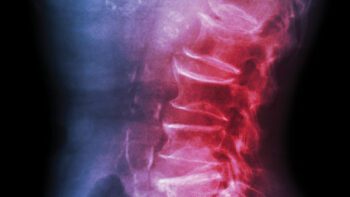Lumbar Fusions 101
The terms lumbar fusion and spinal fusion have received enormous amounts of negative press in the last ten years. Unfortunately, the impression given by the lay press is that these are procedures that are done too frequently and for no valid clinical reason. While the topic of overutilization of fusion lies beyond the scope of this article, it certainly bears mention. What gets lost in the often sensational stories chronicling a spine fusion epidemic is that in the right patient, done the right way, these operations can be life changing.
The concept of fusing two or more bones together in the spine goes back thousands of years. Archaeological evidence of spine fusions done for infection or trauma is well documented. In the modern medical era, fusion of parts of the lumbar spine has become an invaluable tool for treating patients with incapacitating back and leg pain. These patients have often been through a variety of conservative treatments, including physical therapy, chiropractic care, spinal injections, massage therapy, acupuncture, and even simpler surgeries. The typical symptoms for these unfortunate patients involve mechanical back and leg pain. These terms refer to pain both in the back and legs that occur with standing, walking, or even sitting. This pain can limit the activities that an individual can perform, leading to difficulty with employment, chores, and leisure activities. Left untreated, this can lead to job loss, financial problems, depression, and marriage or family problems.
Most people experience an episode of back pain at some point in their adult life. This is usually a brief episode that gets better in days to weeks. Few people have experienced the unrelenting pain described above. This often leads to misunderstanding and lack of empathy as most people have come to believe that back pain is brief and always gets better. As a result, employers, spouses, and friends can’t understand why the chronic back pain sufferer doesn’t just “get over it.” Could they be faking it, milking the system, looking for sympathy? This fundamental misunderstanding can lead to further isolation for the chronic back pain patient. As I have said to my own patients, most people have had back pain; few people have had this back pain.
Having said the above, it should be noted that not all chronic back pain patients are candidates for surgery. In reality, there are patients who simply have too much wrong with their lower backs to benefit from surgery. In addition, it is very important to emphasize that surgery for spinal pain should only be reserved for those individuals that have had longstanding pain that has not responded to the conservative treatments mentioned above, and their pain should be ruining their quality of life. Major surgery such as a lumbar fusion surgery should never be done for patients with mild or moderate pain unless they are experiencing another significant symptom, such as leg weakness.
In the unfortunate individuals who have low back conditions that cannot be addressed with spinal fusion, the goal becomes one of symptom management. This involves weight loss, a core strengthening exercise regimen, abstinence from nicotine in any form, chiropractic care, and even inversion table use.
Once a patient is deemed an appropriate candidate for a lumbar fusion, a meticulous search needs to take place in order to precisely identify the pain generator. This is the area of the spine that is found to be responsible for the patient’s progressive and debilitating pain. Failure to understand the nature and origin of a patient’s pain can lead to failure of that patient to benefit from lumbar fusion. Patients will sometimes become frustrated that more tests are ordered that seem only to delay their surgery. It is important to know that in most instances, these tests can pinpoint the source of their pain and directly contribute to the success of the surgery.
After the pain generator has been identified, the surgeon begins the planning process for the lumbar fusion. This process takes into account the patient’s age, build, presence of spinal stenosis, and the presence of spinal deformity. There are a number of different ways to perform a spinal fusion. The method chosen by a surgeon seeks to address the patient factors listed above as well as the surgeon’s comfort level with a given technique. The goals of a lumbar fusion is to un-pinch or decompress nerves as well as to intentionally eliminate one or more painful joints.
Read the full article in the Fall 2015 Journal.


